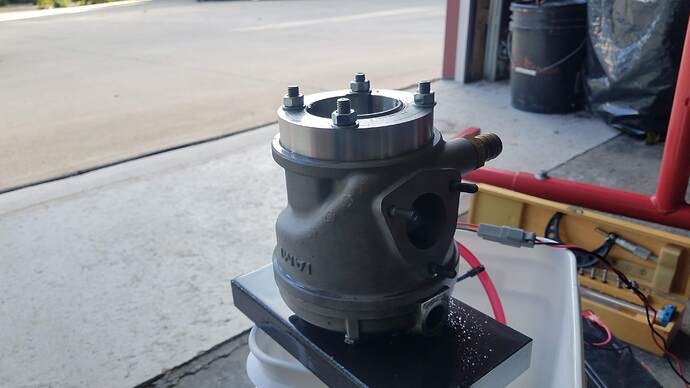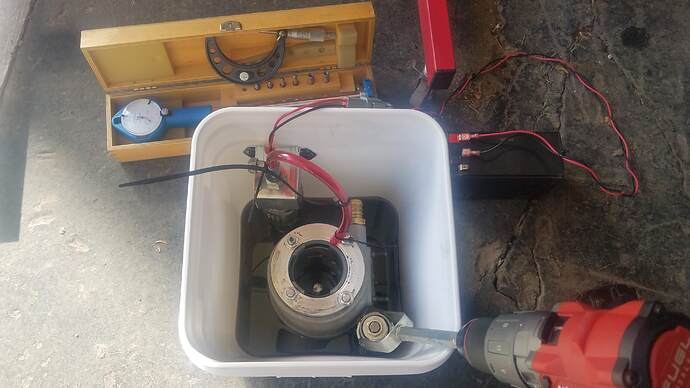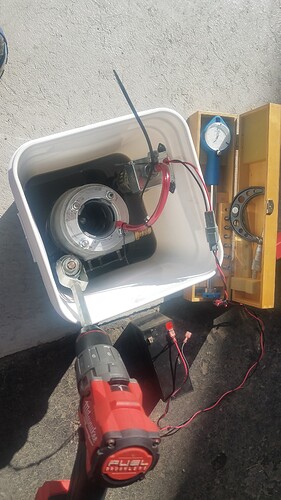Some very good info here already, but I can fill in some more detail. I spent a lot of time working part time in a kart shop in the 90s, when I was racing seriously. Essentially I put time in, in the shop, in order to get parts at cost, and have access to the full machine shop to build my own motors. I fit pistons to motors that won GNs. I never won a GN behind the wheel, but I did qualify on the front row at a sprint GN (KT-LT…not a joke class in the 90s) in the US with a motor I built myself, which was kind of cool. I was not as good at setting up a kart and driving as I was at the mechanical side of things…
You can do first rate work with a JN portable hone. I personally used a JN-89 (predecessor to the 95…same size), which would go from 50-66 mm. I personally could do a better job with a JN than with a traditional Sunnen horizontal machine. It all came down to feel, just as someone said before. I really liked the feel of holding the drill motor in my hands and “feeling the cut” more directly.
Hone, measure…hone…measure…watch temperatures… You will get a feel really quick.
#1 - You need the right portable hone. That has already been covered.
#2 - You need a low speed high torque drill motor with a good handle. I use an ancient SKIL reversible slow speed drill. You can probably fine one on ebay for $50.
#3 - You need torque plates. I made my own on a lathe & mill, with a special arm fixture that I could bolt into a bench vise. You can buy a set from LAD for $120, and then add a fixture arm.
#4 - Use proper honing oil, and lots of it. Or you can use WD-40. I did that at the track more than once…and the motor ran just as well! Honing oil is thicker and does not give as good of feel, but I am sure it is better, or it would not exist.
#5 - You need one decent .mic of the appropriate size. It does not even need to be calibrated, because you are going to use a dial bore gauge, and zero the dial bore gauge to the piston measurement on the mic. You can find one for under $100 if you are patient.
#6 - You need a decent dial bore gauge, reading in tenths. Mitutoyo is good. Sunnen is better. Figure $150-$600 depending on how good of a gauge you want to get.
#7 - Get the right stones. I liked to use JN200 to size to +.0000" / -.0001". Then I would plateau finish with 400 or so. Plateau finishing is literally a few strokes with moderate pressure and you are done. Any more and you are losing oil holding capability. A plateau like this is essentially speeding up and cleaning up break in.
#8 - Learn the speed to get proper cross hatching at 45 degrees. The faster you turn, the faster you stroke. You have to continually readjust the cutting force dial know to maintain MODERATE cutting pressure. As cutting pressure relieves, you will feel torque drop and speed will rise. That is your cue to increase stone force.
#9 - One of the most important things is to have ST Truing sleeves to keep the stones dialed in. This is how you get straight bores. I usually kept the truing sleeves about .010"-.015" smaller than the bores I was working. That way a newly trued set of stones would not chatter.
#10 - There is an ART to zeroing in a dial bore gauge to a mic dimension you transfer off the piston. This is the MOST critical step.
I personally use Sunnen Dial Bore Gauges and use a Sunnen setting fixture to zero to dimensions measured off the piston (I then also double check the setting against the actual locked in mic setting), but that is because I like the absolute numbers to be correct, but this is NOT required. You can fit pistons perfectly without calibrated tools, if you get good at zeroing the dial bore gauge to the mic within .0001".
One thing I strongly believe is that people do not fit new pistons often enough. Whatever the conventional wisdom is about how long you should go before fitting a new piston…I cut that in HALF if you want a strong motor. This is not practical for most people, but I had all the tools…so that is what I always did.


